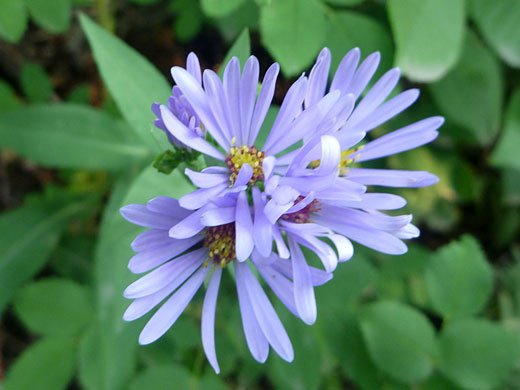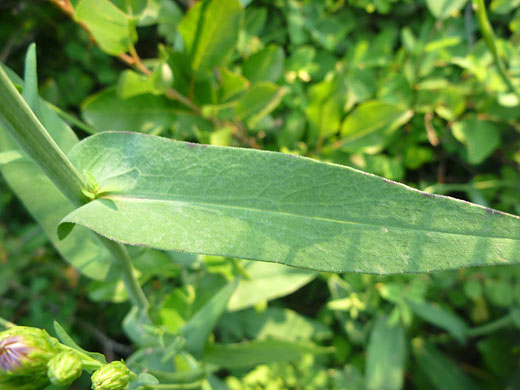
Smooth aster (symphyotrichum laeve), along the Fern Lake Trail in Rocky Mountain National Park, Colorado
Common names:
Smooth aster, smooth blue aster
Family:
Scientific name:
Symphyotrichum laeve
Synonym:
Aster laevis
Main flower color:
Range:
The Rocky Mountains, the northern Great Plains, and small areas of adjacent states
Height:
From 1 to 3 feet
Habitat:
Hillsides, meadows, open woodland; plains to montane
Leaves:
Ovate to lanceolate, alternate, up to 7 inches long, toothless. Stem leaves clasping
Season:
June to September
Flowers, bracts and leaves of symphyotrichum laeve are usually hairless, hence the common name of smooth aster, but may be covered by a whitish bloom. Flowers are slightly less than an inch across, and form broad, open clusters typically containing 10 to 20 heads. The involucres are cylindrical or bell-shaped, lined by several series of small, non-overlapping phyllaries, often with a dark tip, and not glandular (nor sticky). The purple-lavender ray florets usually number from 13 to 23, the yellow-purple disc florets 19 to 33. Leaves are thick and fleshy, and their edges are usually lined by very fine teeth. This is a late-blooming species, adding color to the lower mountain slopes into early fall.
All Contents © Copyright The American Southwest | Comments and Questions | Contribute | Site Map


